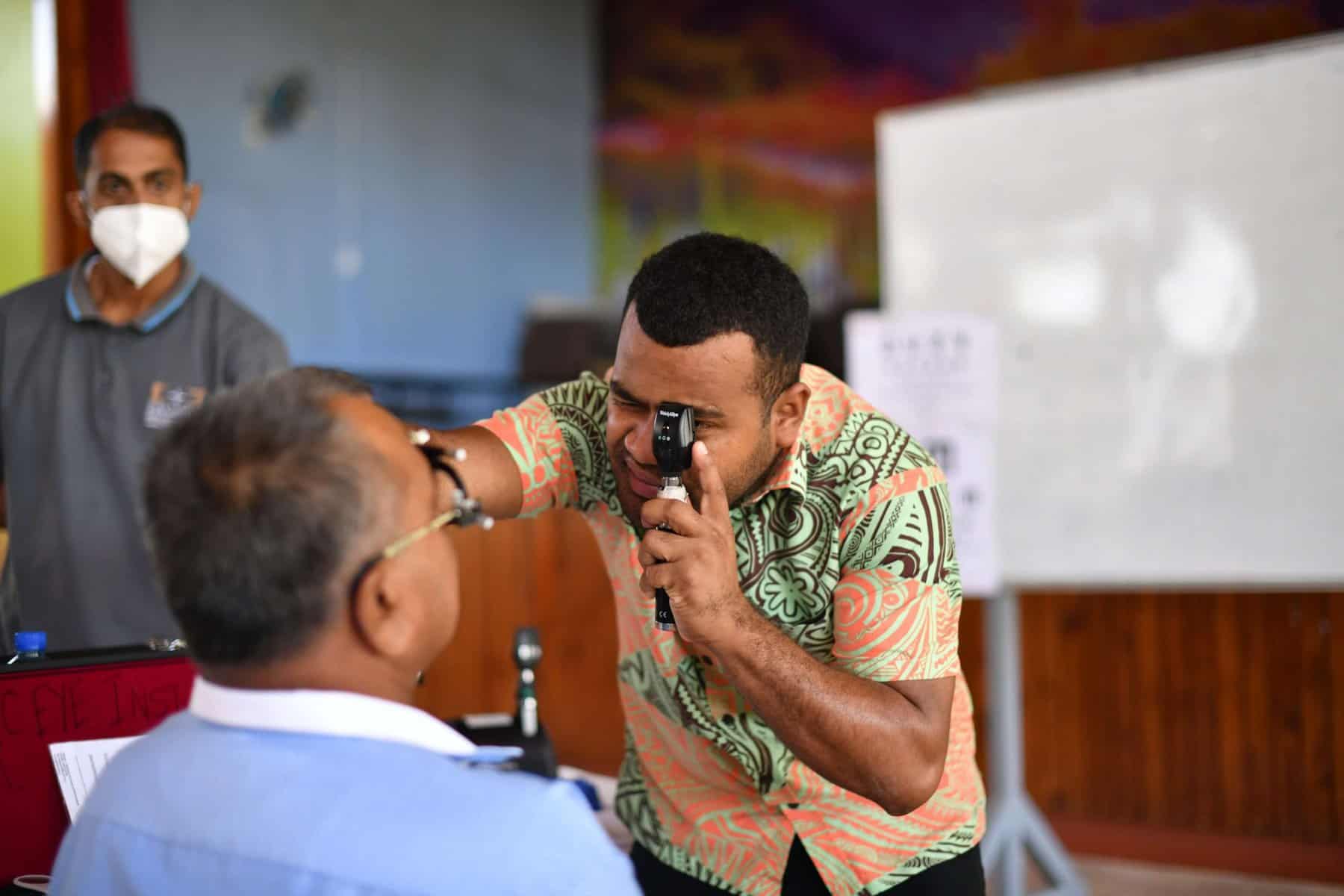Pacific Island nations make up six of the top ten countries with the highest rate of diabetes globally, and diabetic retinopathy, a complication of diabetes, is quickly becoming the most common cause of vision impairment.
Also known as diabetes eye disease, the condition can present in a variety of ways. “Almost everyone who has diabetes is at risk of developing diabetic retinopathy if not managed well. Some of the symptoms include blurry or patchy vision or sudden vision loss,” says Komal Ram, Pacific Programme Manager for The Fred Hollows Foundation NZ.
Unfortunately, we are seeing many people in our region reach the worst stages of diabetic retinopathy, which requires advanced treatments to prevent further sight loss. To address this irreversible condition, The Fred Hollows Foundation NZ is supporting its Ministry of Health partners in the Pacific by taking a “more integrated approach” which includes regular eye screening along with raising awareness of diabetic retinopathy amongst the primary and community health care sectors.
In recent years, The Foundation conducted two qualitative studies on patients’ perceptions of diabetes and diabetic retinopathy in Kiribati and Vanuatu, and found that inhibiting issues include the cost of accessing health services and the stigma attached, especially in rural and remote settings.
As described by one ni-Vanuatu respondent, “There are many people in Vanuatu who do not want to hear anything about diabetes from any source. They are scared to go to the clinic or hospital for a medical check because they are afraid they might have diabetes.”
The studies show that “we cannot only work on eyes, we have to look at diabetic retinopathy holistically and have a wider approach, and work with all our diabetes and Non-Communicable-Disease (NCD) stakeholders,” Ram said.
“We’re very aware of the geographical spread of the Pacific and the cost of accessibility for patients to come to a main hospital. So, we work in collaboration with Ministries of Health on the prevention side and support services to better reach the community, particularly those living far from urban centres,” she added.
The Foundation’s Diabetic Retinopathy Health Awareness training and outreaches have been key in strengthening referral pathways from the community/primary level to secondary/tertiary care.
“If a patient with diabetes lives in a village setting, the first point of call will be the village health worker. We want to make sure that the village health worker has basic information on what to do for a patient with diabetes and where to refer them for an annual check-up or if they are already having problems with their eyes.
“We have a Diabetic Retinopathy Awareness Training Module for health workers. It was developed with our Pacific Ministry of Health diabetic retinopathy coordinators and eye health clinicians through a training kit that we’ve put together and it’s been tested. For example, we train health and community workers on how to do a simple visual acuity test.”
The Foundation has also translated health promotion resources into local languages.
“We also understand that there is a big need for evidence-based information, especially on eye health. In the Pacific, our partners currently don’t have that information to inform the direction of future eye health programmes. This year we have embarked on a significant piece of work on the state-of-eye-health research across the Pacific, in partnership with the University of Auckland. This research programme intends to develop the evidence that Pacific governments and decision-makers require to establish eye health plans and policies that will strengthen and sustain their eye-health systems for the long term.”

